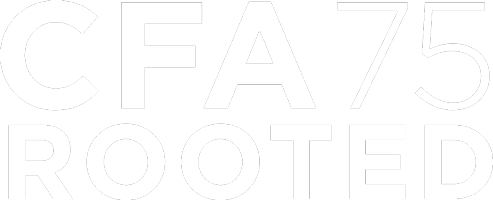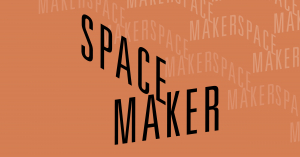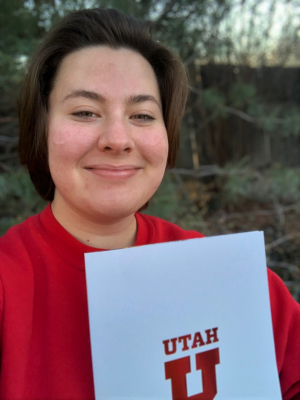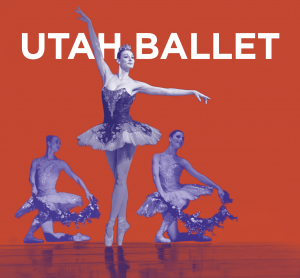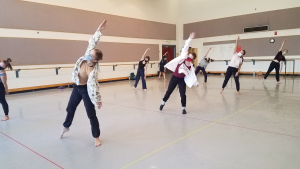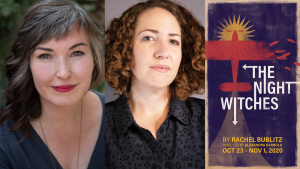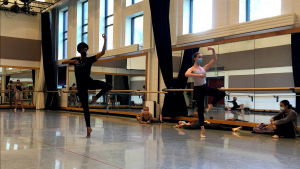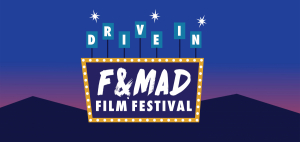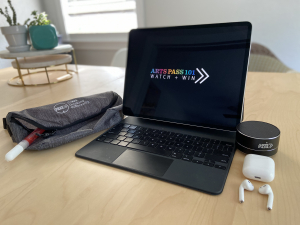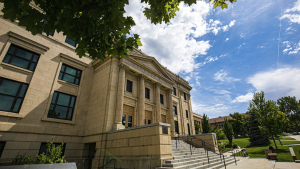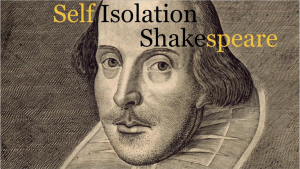Displaying items by tag: Arts Pass
In anticipation of the opening of Utah Museum of Fine Art's "Space Maker" on August 21st, we caught up with Department of Art & Art History alumna Nancy Rivera, curator of the exhibition which features 33 artists from the department's faculty.
As UMFA describes, " 'Space Maker' explores the tensions, histories, and myths that shape our experiences of the world. These works, created by a variety of artists in a dynamic range of media, question the bonds between place and identity, reflect on our relationships to the land, and explore the realities that emerge when an imaginary world is created."
Let's take a closer look at the show.
After a year of isolation, what was it like to come back together on a group show of this size?
What was really cool about curating the exhibition was that when I started looking at the work that the artists produced over the last year or so, it was apparent that everyone was impacted and influenced by some of the same issues. Even though their work is created in such different ways – the materials they use are so different – the ideas and concepts that you see throughout the work started to become a narrative that you could connect to and say, “I felt that same way during the pandemic."
It was interesting to see that in some ways, even though we are isolated, those communal experiences are still very present. We all see the things that we experience in a similar manner.
It’s amazing to see that your professors, the people you are learning from and interacting with now in such a big way, are creating such elevated work. It’s something that they should feel inspired by and really proud of – that we have this type of talent within the University of Utah. I really hope students will go and see the show.
How did the "Space Maker" theme emerge and what do those words mean to you?
A lot of the work the artists created very much explored the idea of place – how we relate to it, how we engage with it, how we perceive it. We were forced to be confined in our homes, and were hyper-aware of the things that surround us – and as artists you tend to look at things through a different lens. So they created, in their own way, an interpretation of the spaces they were in, or really thinking about, or even missing and grieving throughout this pandemic. I think it's something you can apply to a lot of the work.
I also wanted to create an idea to view the show in a way that was broad enough that you could find different types of interpretations, because we have 33 artists. The work that they produce is so varied in process and concept. Looking at it through this lens of thinking about space, and their creation of it, is something that everybody can say they think about through their work. Every one of the artists is working with very specific ideas and themes their work is connected to, but in the end, I think there is an overarching idea of a sensibility towards space that connects them all.
What was the logistical process like?
Coordinating all of this is such a big team project, and I could not have done any of this without the UMFA’s amazing staff support. They have this down. All of the artists were invited to submit up to three works, and then I selected the ones I wanted to include in the exhibition. And there were discussions around “how does this fit the theme?” 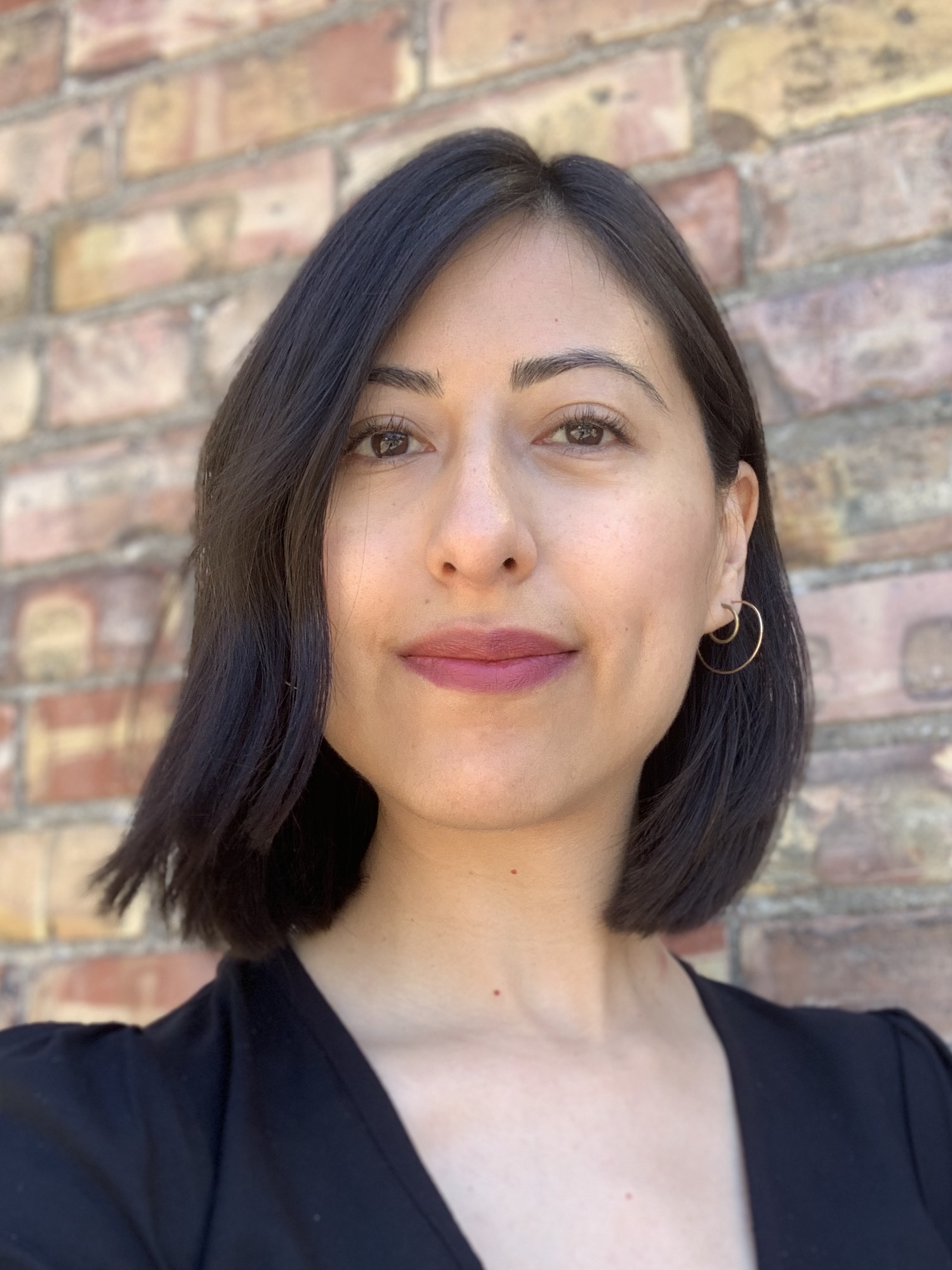 Nancy Rivera, "Space Maker" curator and U alum
Nancy Rivera, "Space Maker" curator and U alum
When I first started selecting works, I wasn’t thinking about an overall theme. The theme came to me as the work was selected and I was looking through artist statements and titles, and information about each of the works. It was more about selecting the best works aesthetically – the craft and the concept. Everybody is so talented. In the end, the decision of what works were included was very intuitive, selecting work that was representative of each of those artist’s careers but that also spoke to a sensibility for the times that we are living in.
There are some great moments in the exhibition of really unexpected materials. And, also how artists took this moment of being isolated, not being able to enter certain spaces, and took that as an inspiration to create. Sometimes I think that without having had something so profound happen to us, some of those ideas would not have emerged. Much of the work was made in the past year or two, and a majority was created during the pandemic. To see the way that they were inspired to create in that period of time was amazing. These are artists whose work I am really familiar with from my time being their student and even before that. So it's been great to see how their work continues to grow.
What is it like to work with the faculty, now as an alum?
It's such a different dynamic. I still look up to a lot of them, and I am so honored to be able to work with them as a curator, in a way that i never expected. I am grateful for the way that they have embraced my role in the exhibition. It has been great to have one-on-one conversations and brainstorms with them about their work.
And why should students go to "Space Maker?"
It’s amazing to see that your professors, the people you are learning from and interacting with now in such a big way, are creating such elevated work. It’s something that they should feel inspired by and really proud of – that we have this type of talent within the University of Utah. I really hope students will go and see the show.
We can't wait to see the work from these 33 wonderful artists:
Edward Bateman
Simon Blundell
Laurel Caryn
Erika Cespedes
Lewis J. Crawford
Al Denyer
Elizabeth DeWitte
John Erickson
Haynes Goodsell
Joshua Graham
Michael Hirshon
Trishelle Jeffery
Lenka Konopasek
Beth Krensky
Naomi Marine
V. Kim Martinez
Kylie Millward
Martin Novak
Marnie Powers-Torrey
Andrew Rice
Vanessa Romo
Sylvia Ramachandran Skeen
Brian Snapp
Carol Sogard
Paul Stout
Natalie Oliver Strathman
Amy Thompson
Emily Tipps
Maureen O’Hara Ure
Adam Watkins
Moses Williams
Wendy Wischer
Jaclyn Wright
"Space Maker" runs from August 21 to December 5, 2021. For more information, please visit https://umfa.utah.edu/space-maker.
Remember, students get in FREE thanks to Arts Pass!

by Rebecca Ortmann
Ever since college first became a subject of consideration in my sixth-grade classroom, I knew that above all else, I needed to get out of Idaho.
No matter how much I tried to convince myself that maybe staying in my home state wouldn’t be so bad, I couldn’t help but feel like my potential lied somewhere beyond state lines. For the next several years of my K-12 education, I had managed to figure out that I wanted to study film, but what I truly wanted to get out of my college experience was still a blur.
It wasn’t until I went to a small art gallery in Salt Lake City that I began to seriously consider going to the University of Utah. My short experience in the gallery gave me an incredible amount of insight into the bustling local creative scene, and I felt like I belonged.
Since being accepted and enrolling at the U, my eagerness to hit the ground running this coming August has only grown. With the bounty of opportunity and new experiences that lie ahead, incoming first year students like me have so much to look forward to.
Here are my top five things that I’m eager to experience on campus this fall:
1. Events
Growing up in a mid-size farming town in southern Idaho, there wasn’t much in terms of artistically-oriented events. Which is why I am ecstatic to attend many of the on campus showcases of creativity (COVID permitting). Whether it's the Arts Bash at the beginning of fall semester, or the F&MAD Spring showcase at the end of the year, I look forward to experiencing it all in my first year at the U of U College of Fine Arts. Additionally, with Arts Pass, experiencing the arts has never been more accessible. By using only our UCard, all students can attend various performances, concerts, and even guest lectures year-round for free, or for greatly discounted prices.
2. Opportunity
With Utah being one of the fastest growing states nationwide, new internship and career enrichment opportunities are also on the rise in Salt Lake City. Both on and off-campus, there are ways to start to gain work experience either as part of the many ambassador and mentorship programs offered at the U, or with new startups in the Salt Lake area. The wide variety of resources provided to students makes it easy to get connected, which I find very reassuring as a new student.
3. Support
When I was searching for more information about the U before applying last February, I was immediately impressed by its wide assortment of different resource centers, and helpful faculty members. Being able to have access to people that could not only help me with my academics, but also my personal life helped me know that despite the large size of campus and student population, I would still be able to receive help if I needed it. The Create Success resources make it easy to contact advisors for information on classes, and helps to get a better picture of what the undergraduate experience looks like. This kind of support allowed me to feel comfortable trusting the U for the next four years of my studies.
4. Location
University of Utah’s proximity to both the metropolitan area of Salt Lake City as well as numerous national forests and state parks makes it a great place to experience both the urban and more rural sides of the beehive state. You can hop on the bus and enjoy dinner in the city one night, and go stargazing in the Wasatch National Forest the next. University of Utah’s Outdoor Adventure outlet also makes the outdoors more accessible with on campus gear rental. You can also easily partake in many of the events Salt Lake City has to offer with your student ID. Being able to have access to both outdoor and city recreation means that if anything, I will not be bored at the U.
5. Academics
What ultimately made me choose the U over other film programs that some may consider to be more well-recognized, was its selection of different courses that I wouldn’t have been able to take if I were to go to a traditional film school. With over two hundred majors, minors, and certificates to offer, I will be able to study what I love without feeling siloed into one field. Additionally, University of Utah’s partnership with different universities across the globe makes it possible for me to make progress in my studies while also immersing myself in another culture through the learning abroad program. As I register for my fall courses, I am also looking forward to what opportunities may lie outside of U.S. borders for me in the future.
With August and the first day of classes on the horizon and creeping closer with every day, I couldn’t feel more excited for the beginning of fall semester and all that the University of Utah College of Fine Arts has to offer.
The School of Dance will close its 2020/2021 season on April 22 – 24 with an evening of classical and contemporary ballet. Spring Utah Ballet will wow audiences with free live performances of excerpts from “Don Quixote,” “Raymonda,” and “Sleeping Beauty,” beautifully restaged by faculty members Christopher Alloways-Ramsey and Justine Sheedy-Kramer. Additionally, two original pieces from the School of Dance’s Melissa Bobick and Justine Sheedy-Kramer will premiere at Utah Ballet.
Justine Sheedy-Kramer has reimagined the Dream Scene from Act II of the beloved “Petipa” masterpiece, “Don Quixote.” With modifications to accommodate current COVID 19 protocols, the scene follows the character Dulcinea as she visits the Dryad’s enchanted garden. The audience will enjoy a gorgeous display of costume colors and full movement from the corps de ballet in this stunning excerpt of “Don Quixote.”
 (Photo: Rick McCullough)The program includes Christopher Alloways-Ramsey’s restaging of the technically challenging “Prologue Fairies” from “Sleeping Beauty.”
(Photo: Rick McCullough)The program includes Christopher Alloways-Ramsey’s restaging of the technically challenging “Prologue Fairies” from “Sleeping Beauty.”
“The ‘Prologue Fairies’ are an enormous task and a rite of passage for ballet artists worldwide,” says Alloways-Ramsey. “‘Sleeping Beauty’ has become a staple for showcasing the mastery of classical technique for the various soloists and principals, and, too, the corps de ballet's architectural formations.”
Additionally, Alloways-Ramsey has restaged excerpts of “Raymonda” on the Utah Ballet dancers. Set in Medieval 12th-century Europe during the Crusades, the ballet was choreographed by Marius Petipa, and the score composed by Alexander Glazunov. “Raymonda” is one of “Petipa's” final masterpieces created for the Imperial Theatre in 1898 and contains many of the identifiable themes from “Petipa's” canon: character dance, large corps de ballet sections, grand pas de deux and variations, with an explosive coda and finale.
“For these excerpts, I have taken variations from each of the three acts of ‘Raymonda’ to create a small suite of dances,” says Alloways-Ramsey. “Please note that under current COVID protocols, all pas de deux have either been replaced with new choreography or taken out of our performance.”
Utah Ballet audiences will enjoy original choreography from School of Dance faculty member, Melissa Bobick. “Press Against the Glass” was created for and in collaboration with the Senior Ballet Majors of the School of Dance.
“Taking inspiration from conversations and personal thoughts shared, this work is a response to the visceral feelings that we each have in important transitional moments in our lives,” says Bobick. “These dancers, on the precipice of graduation and with the addition of anxiety felt from uncertain times, reflected on the commonality and individuality of this moment in their lives. They have shared so much together in the past four years but soon their paths will diverge. As we each press our face to the glass to see what is out there and what might lie before us, we can take courage from those around us as we step into an uncertain future.”
Justine Sheedy-Kramer presents her original piece, "Intermission," a meditation of the impact of the pandemic on performance spaces, preparations, and artistic collaborations. “Intermission” was created in partnership with the University of Utah School of Music, and was filmed in David Gardner Hall, accompanied by recordings from the Utah Campus Symphony.
“I reached out to Dr. Robert Baldwin to inquire about performance activities in the School of Music this semester,” says Sheedy-Kramer. “There were several recording sessions planned, including George Gershwin’s ‘Lullaby’ and Dmitri Shostakovich’s ‘Waltz No. 2,’ which stood out together as a metaphor for the current pause and future renewal,” says Sheedy-Kramer. While these dancers and musicians must perform apart for now, the intermission will be over soon for artists across the world, and we can celebrate a return to the stage together. I appreciate the opportunity to collaborate across departments and I am especially grateful to the School of Music for sharing their artistic and spatial resources.”
In an effort to allow as many people into the audience as possible, The School of Dance is live-streaming the work at no cost. We are excited to share the amazing talents of our students and choreographers. Tune in to Utah Ballet at dance.utah/edu/virtualshows
Showtimes are April 22 at 5:30 p.m., April 23 at 7:30 p.m., and April 24 at 2:00 p.m. & 7:30 p.m.
The University of Utah School of Dance presents Performing Dance Company this weekend, October 29-31, through its virtual streaming format. The concert features premieres from faculty choreographers: Natalie Desch, Christine McMillan, and Satu Hummasti & Daniel Clifton.
Guest Artist Melanie George will also premiere a work for eight dancers. “…from Down Here” is a blues-based jazz work emphasizing themes of labor for the individual and the group through gesture and rhythm.
Melanie George’s signature neo-jazz style was a new to a majority of the cast, and expanded their vocabulary.
“Melanie’s cast of dancers had varying jazz dance experiences, but no one had experience learning or performing neo-jazz dance,” rehearsal director Jessica Boone said. Boone is second-year graduate student in the MFA in Modern Dance program, and has continued working with the dancers after George’s virtual residency concluded.
“During this entire process of learning and rehearsing Melanie’s choreography, dancers have continually questioned and deepened their understanding of neo-jazz dance principles of weight-sensing, rhythm, isolations, footwork, musicality in connection with jazz music, Africanist vernacular movement, improvisation and community. It is a lot of information for the dancers to actively consider and make choices about while performing, and they have risen to the challenge.”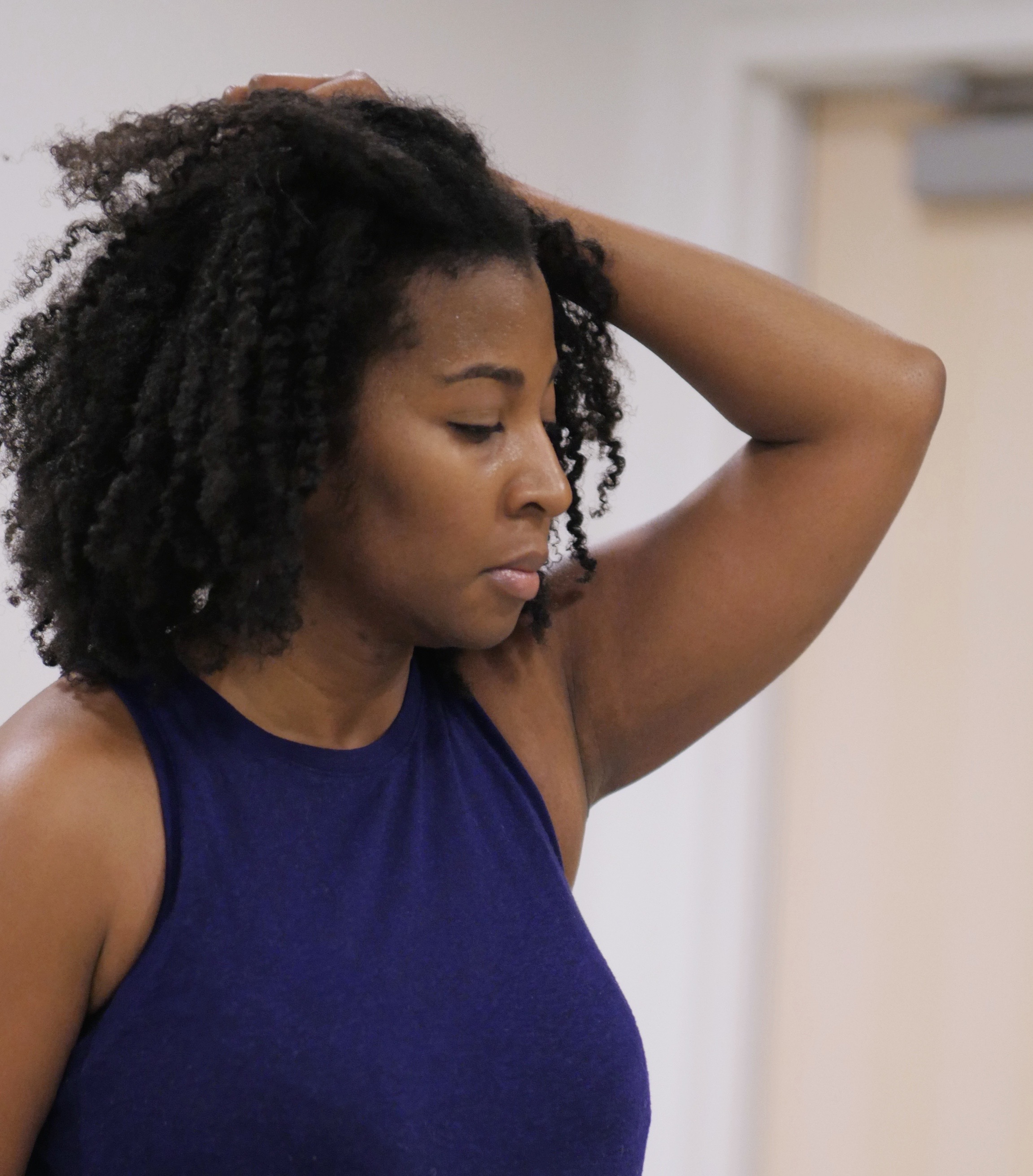
“The work has as much improvisation as it does set choreography,” Melanie George explained. We spent the first few rehearsals learning jazz improvisation methods, which differ significantly from the way improvisation is practiced in postmodern dance. Improvisation in jazz dance is fundamental, as it is in all dance forms of the African Diaspora.”
The music for the work — including compositions by Jimi Hendrix, Roberta Flack, and Cassandra Wilson — was essential to the process as well. “In my work, I mostly use jazz music and its related forms, blues and funk. The blues has many textures and encompasses a wide spectrum of emotions. It’s a very effective path to introduce young dancers to roots-based jazz dancing,” George said.
As with all Fall 2020 performances, the residency called for creative solutions to the challenges posed by social distancing and mask requirements. It goes without saying that having a guest artist present virtually is a different experience than working together in the studio. Regardless, U dancers faced the process with positivity and enthusiasm.
During this entire process of learning and rehearsing Melanie’s choreography, dancers have continually questioned and deepened their understanding of neo-jazz dance principles of weight-sensing, rhythm, isolations, footwork, musicality in connection with jazz music, Africanist vernacular movement, improvisation and community.
“We had to learn new ways of communicating instructions and questions, figuring out directional facings of movement, and deal with inconsistent technology issues. Despite having two camera views for Melanie to see, it was impossible to get a good viewing angle of the entire room. We had to learn how to maintain a sense of energy and community inside the studio without Melanie's presence in the physical space with us,” Boone said.
“On top of learning choreography on Zoom, we had to navigate COVID safety protocols that impacted the spacing, traveling, and the use of props in the dance. Melanie was very aware of keeping the dancers safe, so when it was time for the dancers to move around the studio, we worked slowly to find pathways that would keep the dancers physically distanced.”
The School of Dance has made it possible to allow as many people into the audience as possible by live-streaming performances at no cost! Viewers can catch this exciting concert at dance.utah.edu/virtual shows.
Join U School of Dance for Performing Dance Company
10/29 at 5:30 pm
10/30 at 7:30 pm
10/31 at 2 & 7:30 pm
Director Alexandra Harbold and Playwright Rachel Bublitz on Department of Theatre’s "The Night Witches"
By Aaron Swenson
The “Night Witches” were the fearsome, all-female flyers of the 588th Night Bomber Regiment. At the height of World War II, they completed over 23,000 missions without radios or parachutes, in planes made of canvas and wood. Hidden by darkness, they dropped bomb after bomb on their German enemy every fifteen minutes to keep them from sleeping. Underestimated and under-supplied, the “Night Witches” trained one another as they flew between ranks and duties—mechanics became navigators, navigators became pilots, pilots became commanders. Eventually, all became legends: by the end of the war, they were the most decorated unit in the Soviet Air Force.
On October 23rd, the University of Utah Department of Theatre will debut its first fully virtual production: "The Night Witches," written by Salt Lake playwright Rachel Bublitz and directed by Alexandra Harbold. Even by theatre standards, where no show goes the same way twice, this is a one-of-a-kind event: the show is performed live each night from the actors’ homes and streamed online by a masked, distanced tech crew in the Theatre Arts Building.
This production is unique in another crucial way.
"The Night Witches" cast, design team, and production team are almost all women — echoing the actual, all-female Soviet bombing regiment in World War II on which the story is based. What does it mean to tell this story in this space —virtual, and virtually all-female — right here and now?
Rachel Bublitz and Alexandra Harbold weigh in.
Can you talk a little about the implications of getting to work with such a large group of women? What does that dynamic do for the process?
RACHEL: I find environments like this really fruitful and interesting. I think it’s very powerful when women tell stories about women. Men are great — I love men! — but maybe we don’t need so many of them all the time? You see so many casting notices with ten roles for guys and three for women, but there are always 75 to 95 percent more women than men in all the theatre I’ve done. I like to write parts that I wish I had gotten to play when I was an actress, and plays that I wish were available to me back then. It’s not just acting; there are more women involved in theatre across the board, and it’s exciting to be in a process that acknowledges that and embraces that.
ALEXANDRA: I completely agree. It’s the kind of project that I seek out as a director because, again, as an actor, I felt that was not my experience. As a director, to be able to cast so many women together is one of the great gifts of this process. There’s a genuine sense of community and collaboration; it’s about working together to solve problems. In theatre or storytelling, conflict is important, but it’s often an outside force generating it What I really love about the characters in "The Night Witches" is that they are trying to deal internally with how to be brave and afraid at the same time.
RACHEL: As I was researching this play, it was amazing to see how this group of women had created a whole different way to be a soldier. It was so different than anything I had ever heard about male soldiers. These women would frequently have dances — one would play a musical instrument and they would all dance together. They embroidered for each other, constantly giving each other little gifts of embroidered birds or flowers so that they could have pieces of their sisters with them up in the air. They would say, “we are soldiers, we are here to protect our country, but we are gonna do this as women,” which, to them, meant embracing femininity and community. 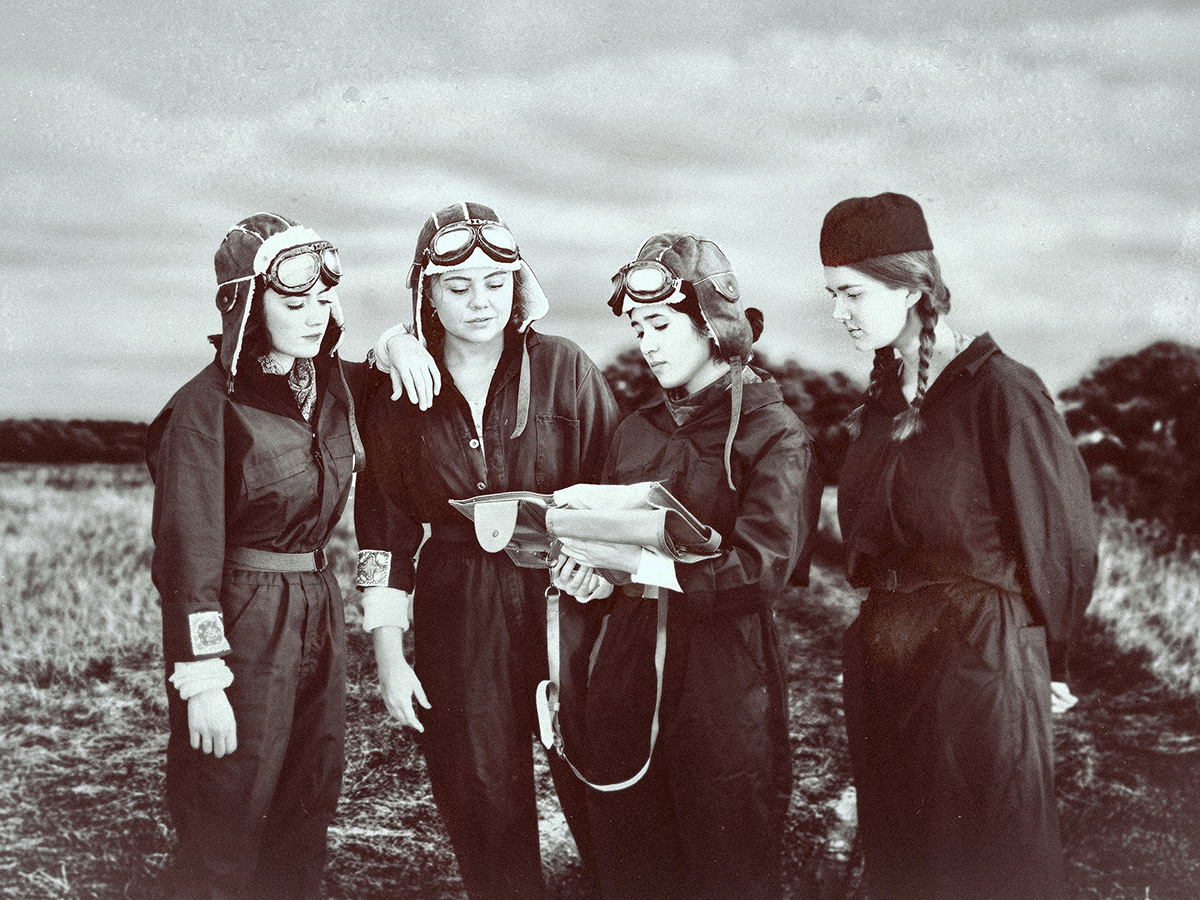 Photo: Todd Collins | Digital Photo Manipulation: Aaron SwensonL-R: McKinley Barr, Samantha Nakken, Francesca Hsieh, Lina Boyer
Photo: Todd Collins | Digital Photo Manipulation: Aaron SwensonL-R: McKinley Barr, Samantha Nakken, Francesca Hsieh, Lina Boyer
ALEXANDRA: This show is a gift to work on. I love working with actors of any gender, but what I’ve found in this particular process is a remarkable willingness to be vulnerable together. There’s an intuitive sort of shorthand, and they’re so generous with each other — what they’ve created and shared feels really important to me right now. The women in the cast are invested in each other, and in the story. This show asks for that, and I see them answering it every day.
And they’re answering it over Zoom! It’s surprising to me, at least, that this kind of work that’s so centered on communication can even happen right now, under the circumstances. Can you speak to that a bit, in terms of challenges, or opportunities, or both?
RACHEL: I am so glad that I have my job and Andra has hers. We did not know how we were going to do it over Zoom. It seems like an impossible thing, but that’s what theatre is: an impossible thing. We all go into a room and pretend the impossible, and if we don’t all pretend together, it’s not gonna work. Of course, we’re in separate rooms these days, but we’re working together, pretending together, to turn them into one room. This play is very theatrical in person, and it’s almost more so in Zoom: how do you create a plane and make it do all these things the script demands from these tiny little boxes on this tiny little screen? I love art that comes out of times where things aren’t easy, because everyone has to push themselves. Everybody has to work as hard as they can in order to take off — to be a plane that actually works.
ALEXANDRA: You know, sometimes you end up with this division between the acting process and the technical process. [Virtual theatre] poses so many challenges, and success really depends on shared effort from the beginning. I still feel like I need to make sacrifices to the Zoom gods to ensure safe passage, but it’s been interesting to see how this might actually allow for a healthier, more collaborative version of the creative process.
As an actor, I find directing over Zoom to be a challenge. I suspect it feels more intrusive or abrasive, particularly in tech, where a disembodied voice breaks in to give a note. Silence feels different on Zoom. What I want to bring to the process is something intuitive and connected to the actors’ experience. I hope that’s still coming through. Sometimes it feels disorienting, but I am so grateful that we are doing "The Night Witches" right now. It feels like an antidote to the disconnect that the medium brings.
Speaking of which, Rachel—as a Utah playwright, do you find it helpful to live in the same city where your work is being produced? How does it affect the process to have that gift of proximity—or maybe it’s not a gift?
RACHEL/ALEXANDRA: [laughter]
ALEXANDRA: It’s a gift.
RACHEL: When you write a play, it’s different from a book or a piece of music because it’s not fully what it is until it’s performed. Typically, as a playwright, I’m usually involved in the first two or three productions of a script before I hand it off and say, “Alright, the world can have this now, and give me a little bit of money each time you do it, please.” I’ve used this technology in the process before. It’s a way to get things done, but it’s not as fun as being in the room.
Working with Andra has been amazing. I pitched this play to the YouTheatre at the Egyptian in Park City. Jamie Wilcox is the Artistic Director there, and she said, “This sounds amazing!” I started writing it and right away, I thought: “The women are the plane. They’re gonna make all the plane noises, and they’re gonna be the plane, and I have no idea how that’s gonna work. That’s what this play is.” We planned to do it at a Fringe Festival, and, you know, you don’t have a lot of equipment — maybe benches and that’s it.
I knew right away that I wanted Andra to direct this. She’s so specific and so thoughtful with movement, as well as the inner journeys of the actors. A lot of stage directions were like, “I don’t know if this makes any sense, and I don’t even know if this is possible.” And Andra said, “I don’t know if it is either, and that’s really exciting.” And we just got in a room and played. It was such a joy to have someone who wanted to work like that. She’s amazing to work with: so collaborative, great with actors. It’s great being in the same city. If I ever have a choice of a director, she’s at the top of my list forever.
ALEXANDRA: I feel the same. It’s been so interesting this time to hear what your vision is and bring that into the room with my own vision, and then run into the question of how to make Zoom play nicely. Fortunately, we’ve got amazing designers who are wrestling with the same kinds of creative questions.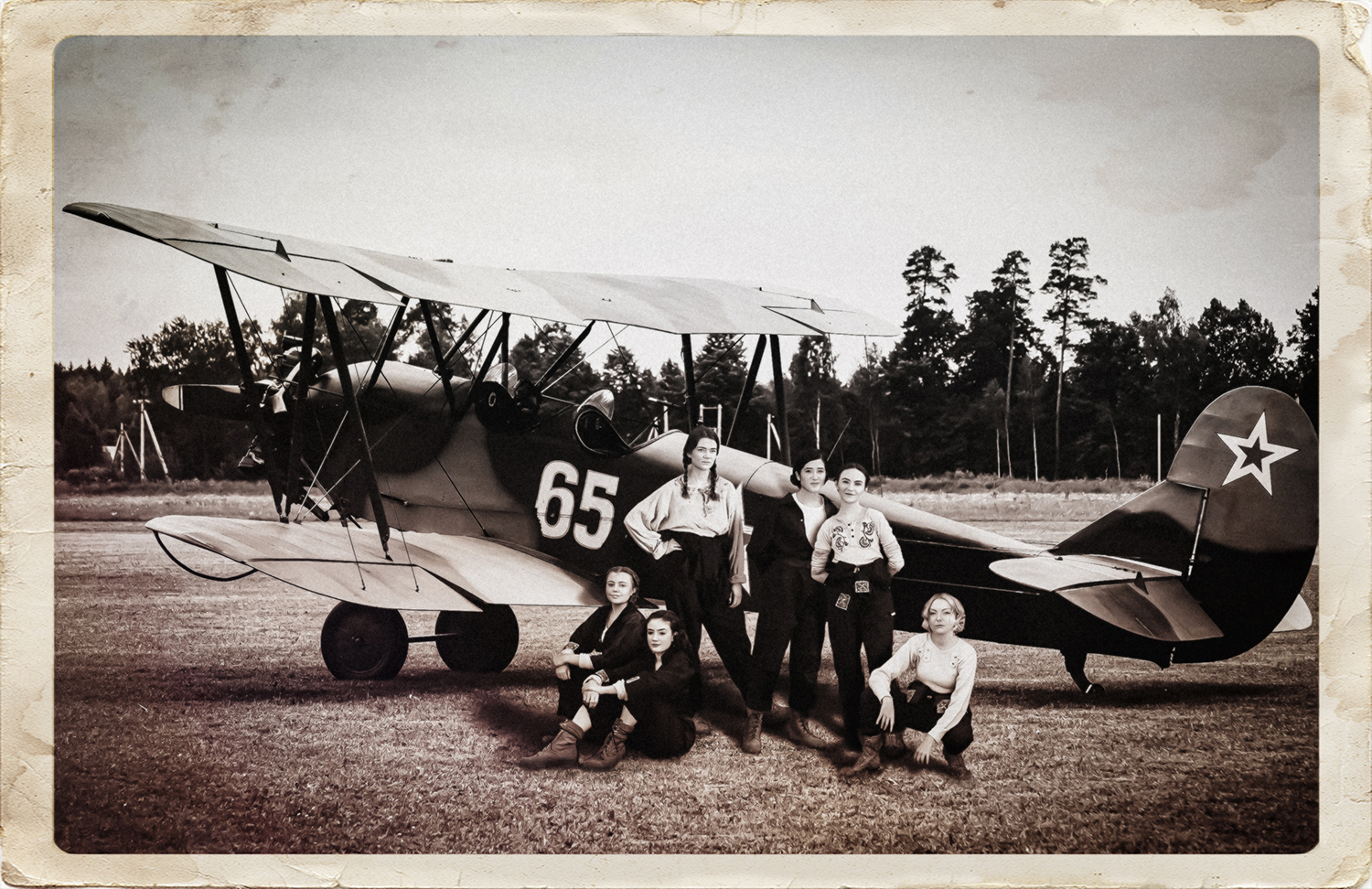 Photo: Todd Collins | Digital Photo Manipulation: Aaron Swenson L-R: Samantha Nakken, McKinley Barr (seated), Lina Boyer, Francesca Hsieh, Katie Calderone, Shelice Warr
Photo: Todd Collins | Digital Photo Manipulation: Aaron Swenson L-R: Samantha Nakken, McKinley Barr (seated), Lina Boyer, Francesca Hsieh, Katie Calderone, Shelice Warr
So why is it so important that the woman literally, physically, become the plane? I have my own thoughts about this, but I’d rather hear from you…
RACHEL: When I was getting my MFA, my favorite teacher Michelle Carter talked about a photographer who said, “when you create art, leave space for your audience to enter with you.” When he took pictures, he wanted to leave space for the audience to climb inside. I feel the same way about plays. I want my audience to use their imagination; I want them to pretend with me and the actors. That’s definitely part of it, but the heartbeat of this play is the fact that this group of women are keeping themselves in the air. Against all odds, against machine guns and hundreds of Nazis, they are keeping each other aloft in really crappy planes under really crappy conditions. They don’t have parachutes; they don’t have navigation—they have pencil and paper and each other. It’s just one of those moments when the theme and what you want from the play and what the audience needs all fit in the same box beautifully.
ALEXANDRA: I agree. The image of the body connected to the planes — it's the metaphor and the theme, fused in one. The plane itself is a collective body, not just the two that fly it. I mean, Zoom is forcing my hand on certain things in terms of storytelling, but it’s a shared mission every time. It’s not just two people going up; the whole group are invested in every flight. It’s never just the present tense battle; the thematic investment continues and echoes. You have the fragments of embroidery and the fragments of the plane… Ahhhh, I can’t give interviews. I can think about the play, but I can’t talk about it!
RACHEL: You’re doing really great!
ALEXANDRA: …Yeah, well. [laughs] I’m here. I’m just grateful that we’re doing a show that’s ambitious and demanding. It’s not conversation around a dining table —we’re trying to create a plane, through movement and staging, on Zoom. It’s about a group of people trying to navigate the unknown during a time of conflict and crisis. And that feels really healing. We’re doing this particular war story in a time of so much uncertainty. There are parallels to contemporary politics, and nationalism, and patriotism, and populism. It feels like we are able to engage the real world, but a healthier version of it. [The Night Witches] created their own way to serve their country. They basically trained each other so they could move through ranks and assignments, and that investment in one another allowed them to thrive at a time of rationed resources. It feels like the right story for right now.
Like it was written for this moment, almost. What drew you to this story in the first place?
RACHEL: The book where my research came from is "Dance with Death," by Anne Noggle. She flew planes for the US during World War II, but they didn’t let woman fly in combat, so she was just delivering rations and equipment and stuff like that. After the war she became a photographer and eventually, in the 90s, she went to Russia and interviewed all the living Night Witches and took their photographs. Each living woman has their own chapter. And it was just so rich with details — the play wrote itself in so many ways. After the production at the Fringe Festival we were expanding this to be a full-length play, adding two characters and expanding two others, and it was such a joy to go back into the research. I think all the things that I loved are in the play: the woman who curled her hair in case she met her husband while she was out being a soldier, or the fact that they would get so disoriented from the search lights that it was hard to know where the ground was and where the sky was. These planes are basically crop dusters going up against machine guns and flood lights, and they somehow had to keep their bearings.
ALEXANDRA: I started digging back into the book to think about staging, and in one of the stories a pilot realized there was no floor under her feet after she’d been shot at. The fragility of the actual planes makes Rachel’s choice to have the women embody the plane even stronger — it’s so minimal and vulnerable. I loved that they used the navigation pencils as lip liner, and the stories about them taking kittens up in the cockpits. Yesterday, one of our actors was on Zoom and her cat was in her arms during the flight scene. It was surreal. There are moments of delight side by side with the scary moments, but the moments of connection from those stories that are built into Rachel’s play — those are what I find so beautiful.
In a way, that leads to a good bit to leave on, because we’re coming up on Halloween. The nickname, “Night Witches”—can we get into that for a sec, and the reasons behind it, or…I mean, is this an opportunity to talk about reclaiming witchcraft and sorta lean into that? Why is it significant that they were called “witches?” What’s the best way to phrase this…
ALEXANDRA: You’re fine, you phrased it.
RACHEL: I think the Germans definitely chose that name to put them down. [The Night Witches] would turn off their engines as they approached their targets so they couldn’t be detected. You’d just hear this whoosh before the bombs came. So apparently it was reminiscent of broomsticks in the air even though no one has ever heard that, to my knowledge. I feel like it was very much about putting them in their place. For so long it was women who knew about herbs, but when men started to take over medicine, they called those women witches to take that power away from them. It’s there throughout history: men find women that they can’t control, call them witches, and kill them. But these women owned that name. They said “this is great. This is who we are: ‘The Night Witches.’”
I love witchcraft—I mean, I’m not a witch at all, but I’m all for reclaiming the word. “Witches.” It’s this beautiful space for women to come together to be weird and strong in a way that we are not always allowed to be. I have another play about women and witches as well. It’s called Mommy Dances with the Devil because [laughs] it’s about a stay-at-home mom group that’s also a coven. I love witchy things.
ALEXANDRA: Yeah, it’s funny how the play is so dense with what feels like little bits of witchcraft — the songs and the embroidery. I love the story [our dramaturg] Chessie found about that. It’s a way to protect each other. There’s longevity in spells, and connectivity…yeah, I’m all for witches as well.
So we’re saying, “less solitary witchcraft, fewer lonely witches in huts?” More covens, more collective embroidery, more collective spells?
ALEXANDRA: Exactly.
RACHEL: I’m all in with that.
Join the Department of Theatre for
THE NIGHT WITCHES
Oct 23, 24, 29, 30 and Nov 1, 2020 | 7:30pm
Oct 25, 31, and Nov 1, 2020 | 2:00pm
*Special talkback with members of the cast and production team immediately following the performance on Friday, October 30.
Through ArtsPass, U Students can reserve free tickets by visiting the University of Utah's Arts Tickets site. Choose your desired day and time, then proceed to checkout and select "ArtsPass" as your form of payment.
For guest choreographer Katlyn Addison, the challenges of rehearsing with dancers over Zoom (a necessary precaution due to the pandemic) catalyzed creativity.
"There were definitely challenges and restrictions, but to be honest, I liked it. Addison said. "We had to have the dancers 10-feet apart on stage. They had to wear masks, no touching, no partnering... I liked it because there were rules I had to follow, and that helped me build a structure."
Her work with U School of Dance performers will debut this weekend as part of Utah Ballet I, a livestreamed concert. Addison's original piece, "Saint-George, The Composer, Fencer, and Creator," is inspired by the music of French composer Joseph Boulogne, Chevalier de Saint-Georges. She not only loved the way the music naturally made her want to move, she felt kinship with the composer's background, as they share Caribbean heritage.
"One thing that inspired me is that he was seen to be just as good as Mozart, and actually Mozart was inspired by his music, but he didn't get the recognition that he should have," Addison said. "I wanted the piece to be a representation of how beautiful Joseph's music is — with the textures of the highs the lows, ins and outs, the gooiness, the sharpness..."
She encouraged her cast to listen deeply to the music, and instead of rigid counts, be led by the dynamism of the composition. She would dance with them on video so together they could feel the pull of the sound. "We did everything full-out a million times. I was dancing with them too — I hope that encouraged them to feel like they were dancing with me. Many times I would say 'let's do it together,' so they would feel comfortable enough to push to their own limit but also create the dynamic and timing that I was looking for, and the musicality that I wanted." 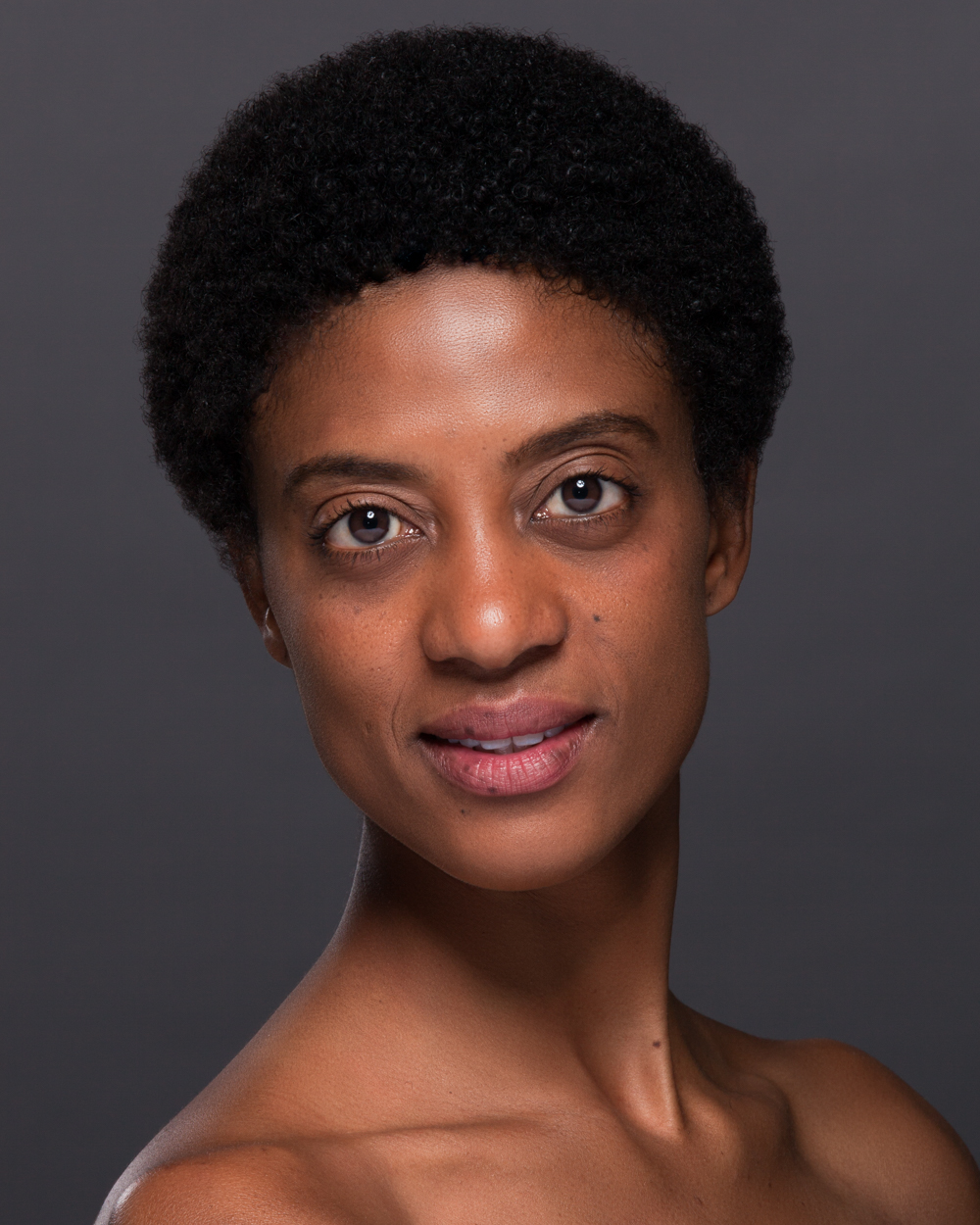
She was impressed by the dancers' authenticity, and they were clearly happy for any chance to be dancing once again. "They came into the studio so eager to work and move the body. Mind you, because of COVID none of us have been in the studio dancing together in months. They were very expressive. One thing that attracted me to them was that they showed their individual unique personalities," she said. I hope they enjoyed it as much as I did. It was a great experience."
As for the audience, Addison hopes the piece will simply bring them joy. "I hope the people watching can escape reality for a moment and experience the fullness art can bring you," she said.
Originally from Ontario, Canada, Addison danced with Houston Ballet as a corps de ballet dancers before joining Ballet West in 2011. She was promoted to a demi-soloist in 2014, then a soloist in 2016 and then to first soloist in 2018. An accomplished dancer and choreographer, Addison was the first Black ballerina in Ballet West’s history to perform the Sugar Plum Fairy in Frederick Ashton’s “The Nutcracker” and has been named one of Huffington Post’s “26 Black Female Choreographers and Dancers You Should Know.”
Utah Ballet I will also feature work from Guest Artist Penny Saunders of Grand Rapids Ballet, as well as School of Dance faculty Melissa Bobick and Justine Sheedy-Kramer.
Viewers can catch this performance, and the remainder of the fall season at dance.utah.edu/virtualshows. Livestreamed performances will be free to all.
“We recognize that the arts are a vital part of our connection to one another, and we need connection now more than ever,” said School of Dance Director Luc Vanier. “So, we, in the School of Dance, have made the decision to provide free access to any patron who would like to be moved by our movement this year. No cost. Just click.”
Join the School of Dance for Utah Ballet I
October 22 @ 5:30 PM
October 23 @ 7:30 PM
October 24 @ 2 PM & 7 PM
Drive in to this year's F&MAD Fest!
It's time for our annual F&MAD Film Festival. This year join the Department of Film & Media Arts for their first ever drive in movie-experience!
“F&MAD is a celebration of our students’ achievements, and an important, public showcase of the depth and breadth of their talents and interests," says Andrew Nelson, Chair of the Department.
Show up ready to experience an incredible range of genres like experimental, documentary, narrative, animated, screendance, and beyond. You will even get a change to support student filmmakers and cast your vote for the "Best of Fest!"
Where: East Stadium Parking Lot on campus
When: October 17th. Check-in will begin at 6, screening will begin at sundown (approximately 6:45pm)
How: Sound will be transmitted via FM radio signal. Attendees are encouraged to bring a battery-operated radio so they don't have to use their car radio.
Lineup:
- Cor Dente, Directed by Mia Hunt
- Sugar Baby, Directed by Leila Salari
- Living Moneyless, Directed by Beth Kearsley
- Found Objects, Directed by Lois Brady
- Stolen, Directed by Emily Gardner
- Amphibious, Directed by Mia Hunt
- Dubble Trubble, Directed by Dominic Martella
- Inside the Grinning Machine, Directed by Ben Mortenson
- I Met Charlie in the Springtime, Directed by Chloe Hunt
- Turtle, Directed by Jordan Boge
- Twenty, Directed by McKenzie Smith
RSVP HERE!
All campus COVID-19 protocols must be observed.
ARTS PASS 101: WATCH + WIN
The arts have measurable and invaluable impacts on our lives and our learning. That’s why the U’s Arts Pass program makes it easy and affordable to experience the arts at the U — even during a pandemic!
Arts Pass 101 promo from U of U College of Fine Arts on Vimeo.
CONTEST DETAILS
Arts Bash, our usual start-of-year event to promote Arts Pass, is taking on a new form this year to accommodate the health and safety of our faculty, staff and students. Enter: Arts Pass 101 which will be held during the second week of school (Aug. 31 — Sept. 4), and will give you the chance to learn about how you can get free or deeply-discounted access to amazing arts experiences through the Arts Pass program, and in doing so, get the chance to win one of three prize packs, with the grand prize including an iPad Pro and keyboard (on which you can make or experience the arts)
ENTERING TO WIN IS EASY
And you can do it three ways (choose any or all):

Watch our Arts Pass 101 video that will be hosted on artspass.utah.edu from Aug. 31 through Sept. 4 to learn about the arts offerings this year. During it, you’ll be given a special link where you enter to win!

Visit the Arts Pass 101 table outside the Utah Museum of Fine Arts main doors from noon-2P on Tuesday, Sept. 1, 2 or 3 to pick up some swag, swipe your card for your entry to win, and feel free to swing by the UMFA Café inside for your favorite beverage.

Find the University of Utah’s Instagram post about Arts Pass 101, like it, tag two friends on that post, and follow @uofuartspass.
ANNOUNCING WINNERS
Our winners will be announced on Arts Pass social media (Facebook and Instagram) on Saturday, Sept. 5. At 12P noon.
Music is known for bringing people together, in unprecedented times like these it’s important to remember what bonds us.
Which is why the University of Utah School of Music is celebrating the end of the year with the first of its kind, virtual Student Showcase—celebrating the class of 2020 as well as connecting with our music community.
At the School of Music, students are constantly practicing and performing in ensembles. But this year those performance opportunities were cut short. The 2020 Student Showcase is an effort to highlight their hard work and celebrate their achievements. Each area will feature pieces reviewed and selected by faculty, for one night of home, yet high quality student performances. 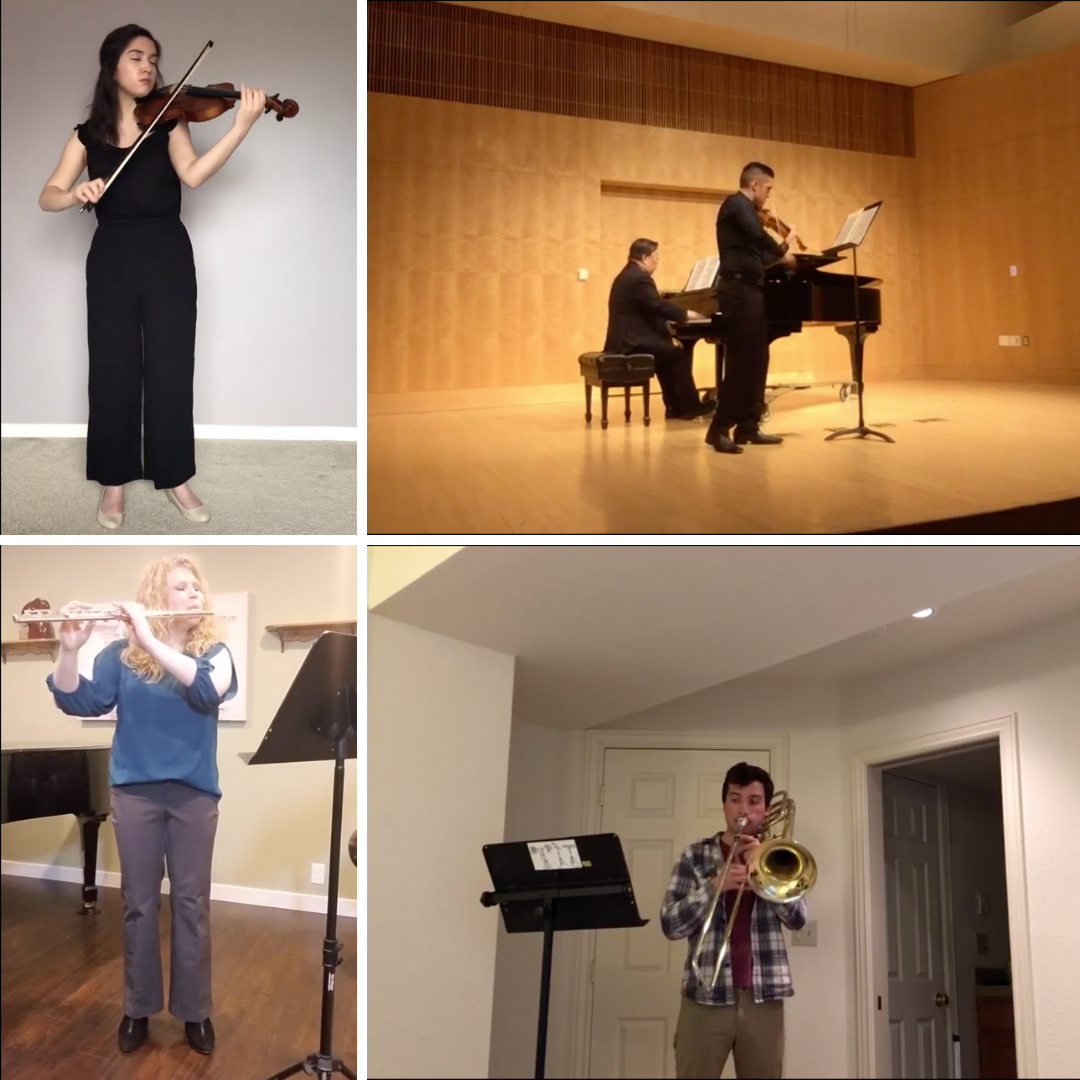
Join the Facebook Watch party!
Saturday, May 2 at 5 p.m.
(If you can't make it, the video of the performance will be uploaded on School of Music’s YouTube page.)
U Theatre students perform Shakespeare while isolated
By Anastasia Briana Drandakis
What do University of Utah theatre students do in the wake of canceled and postponed performances amidst a call for social distancing during the COVID-19 pandemic? They brush up on their Shakespeare through video conference calls.
Self-Isolation Shakespeare is a collaborative, student-led effort to read through Shakespeare’s canon on Zoom three times a week, with an open invitation for the community to watch actors of all levels participate. The talent range includes theatre students, department faculty with impressive resumes, and even professionals working outside of the university that come together to perform these pieces while socially isolating. All the readings are recorded for YouTube and the shows vary between Shakespeare’s tragedies, comedies and historical shows to make each genre available to their growing audience.
Connor Johnson, a junior in the Department of Theatre’s Actor Training Program, was inspired to start Self-Isolation Shakespeare after viewing a similar project that Professor Sarah Shippobotham shared with his class during the early rise in global quarantining. “The Show Must Go Online” created by Robert Myles are weekly readings on Zoom of the complete plays of Shakespeare by a global cast, in the order they were believed to have been written. Johnson thought there was no reason why the students of the University of Utah couldn’t undergo a similar project, and through the support of fellow students and department faculty, he was able to create a social media presence for the performances so that anyone in the theatre community could access the series.
“I realized the other thing this could be is a great opportunity for students to act alongside professionals or professors,” said Johnson. “People who students can’t always easily work with just because of the nature of professional productions.”
The professional theatre faculty of the University of Utah has already participated alongside their students in several of the show readings, including Robert Scott Smith who played Prospero in "The Tempest," Alexandra Harbold who played Mark Antony in "Julius Caesar," and Sarah Shippobotham who played Richard III in "Richard III." Johnson has also seen a mix of outside interest in the project, including actors with working credits from local professional theatres, New York, the West End of London, and The Globe Theater.
“People have said that it was actually great to be able to ‘look over my script last night’ or 'to prepare for this role the other day, because I was thinking about something other than the news.’ They really latched onto the project, and have really given their thought and time and creativity, which has been wonderful to watch.”
While this series helps to bring the University of Utah theatre community closer during this time, it’s also an opportunity for those involved to broaden their familiarity with a genre of classic works that are continuously produced in the modern entertainment industry in various forms.
“There’s something about Shakespeare that is endlessly entertaining and brings endless variety in ways that most other plays don’t,” said Johnson, who believes that knowledge of this material can be generally useful as a theatre student. “Somehow his plays have managed to maintain interest for hundreds of years, and I think in a more pragmatic sense, for any actor that’s going out into the acting world, Shakespeare is a huge percentage of work that you might get. Even if you don’t want to be a classical actor, every regional company does Shakespeare once a season or once every two seasons."
In addition to practicing classical theatre, this series is also a practice session in performing for digital cameras, microphones, and the general process that it takes to produce a successful piece of live web content.
“It’s freeing in some ways that you can do things with your voice that you can’t really do on stage,” said Johnson, describing the new acting possibilities he’s observed that performing scenes via Zoom can spark. “It picks up much more subtlety than your allowed to have when you're on stage in a big auditorium. It’s also really fun to see other people doing that, and picking up on that, and it kind of adds this new layer of possibility and creativity.”
Johnson gives credit to an entire team of peers that have volunteered time to shape the current state of the production, including a designated “stage-manager” for the productions (Kiersten Farley), social media managers (Lexie Thomsen and Liam Johnson), and an assistant producer (Jessica Graham). 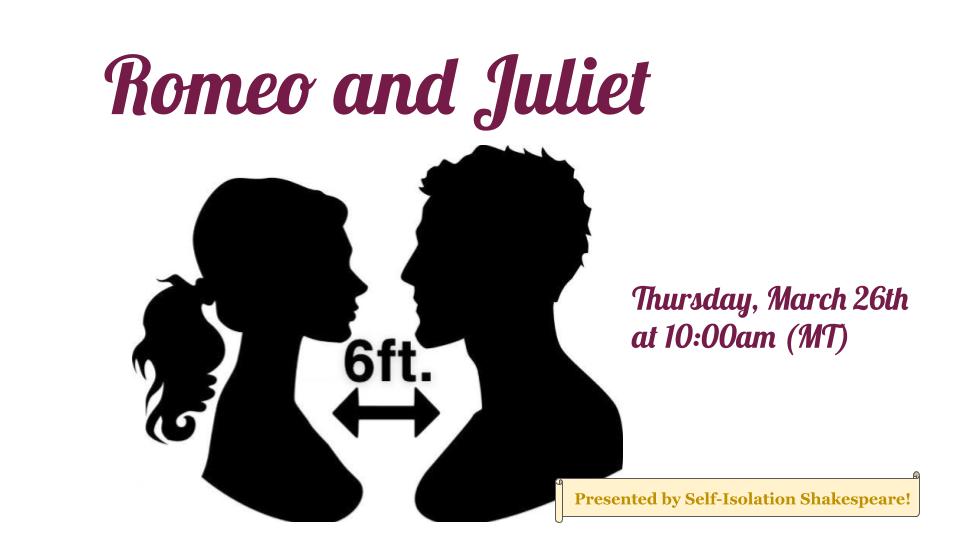 Poster design Lexie Thomsen
Poster design Lexie Thomsen
Self-Isolation Shakespeare performances are scheduled every Tuesday at 10 a.m. (MST), Thursday at 10 a.m. (MST), and Sunday at noon (MST) through a Zoom conference link posted on the official Facebook page the day of the scheduled production. Show and cast lists are announced a week in advance on the official Facebook page, and anyone can submit to be cast in the Zoom performances by filling out a Google Doc form asking their preferred contact information, acting background, and familiarity with Shakespeare’s works. The recorded performances are archived on the official Self-Isolation Shakespeare YouTube page as the series progresses.
“I think that something this project made me realize is that we’re all kind of in this together,” said Johnson, reflecting on the support that has been felt by the theatre community for the project so far. “People have said that it was actually great to be able to ‘look over my script last night’ or 'to prepare for this role the other day, because I was thinking about something other than the news.’ They really latched onto the project, and have really given their thought and time and creativity, which has been wonderful to watch.”

